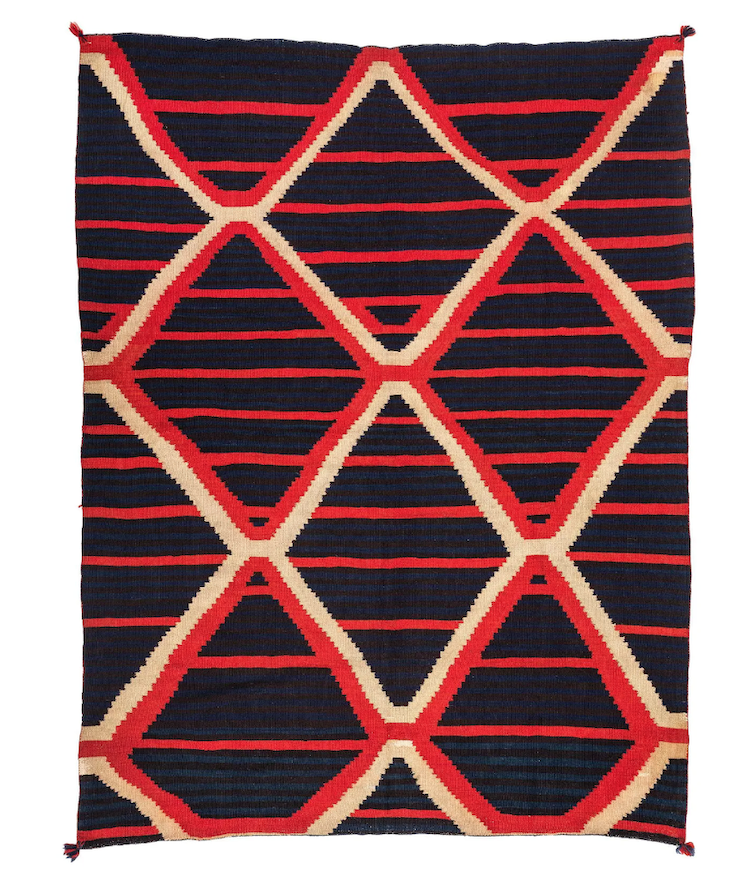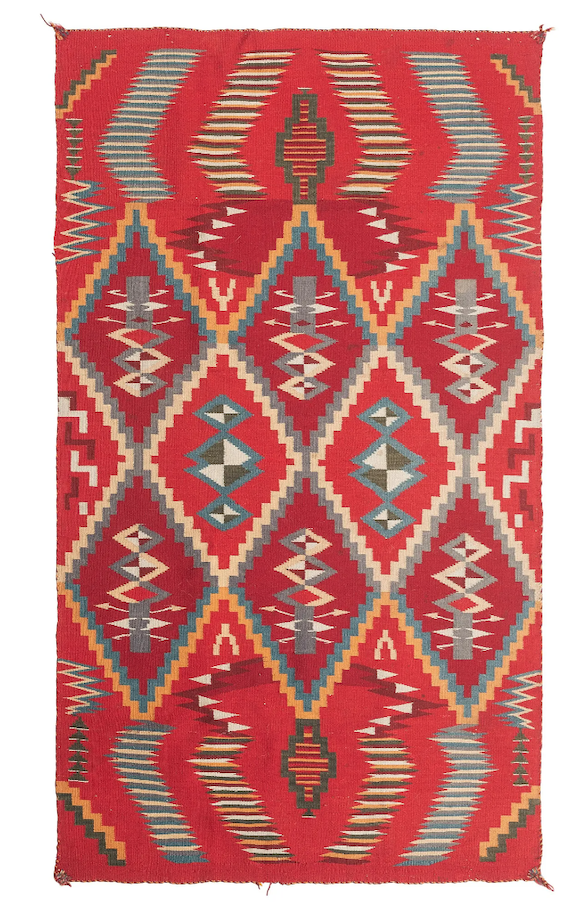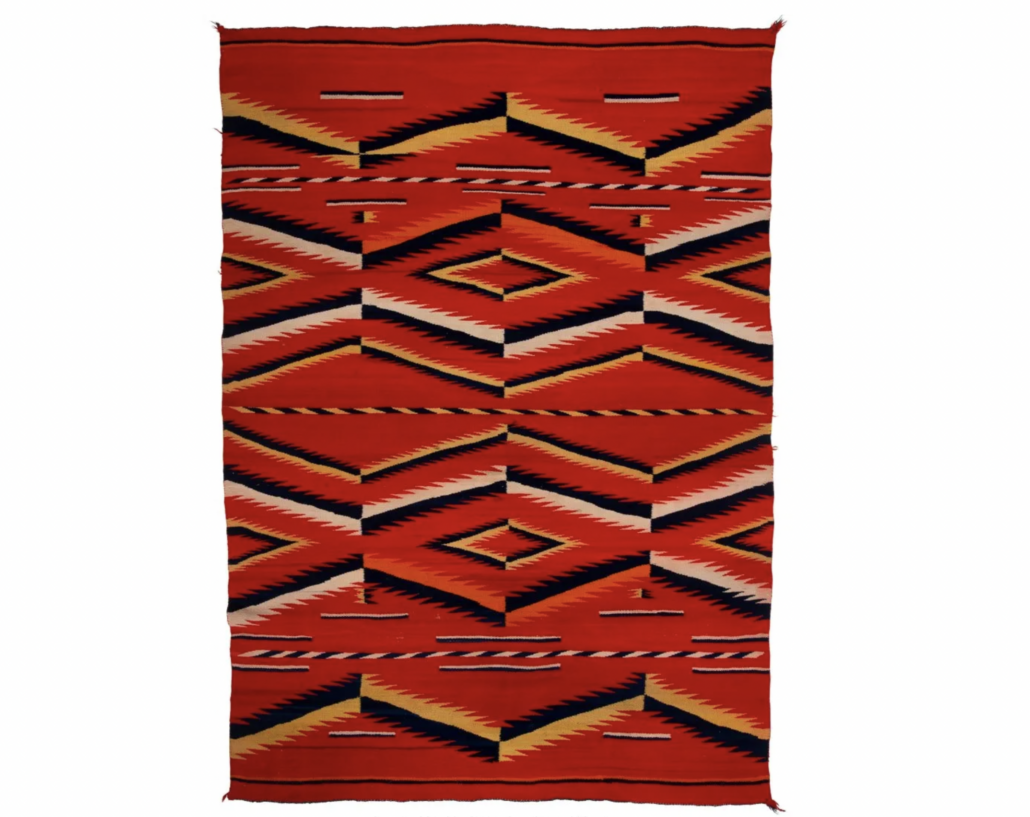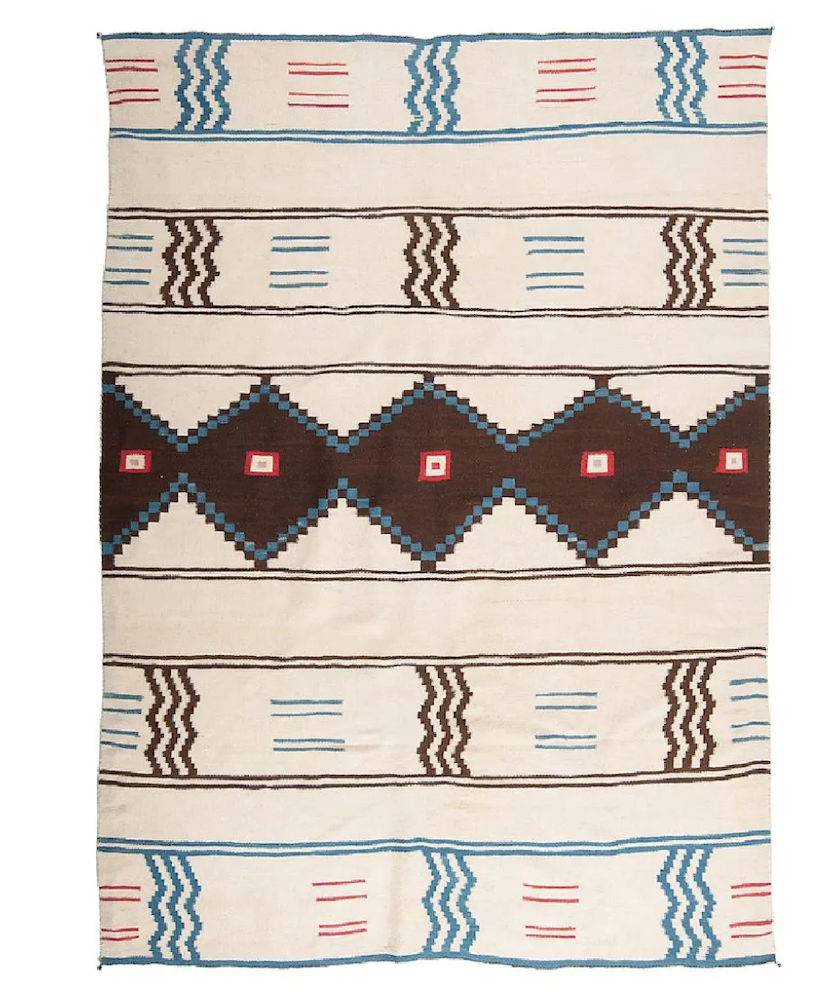
NEW YORK — The centuries-long weaving tradition practiced by Native American people in the Southwest is as diverse and compelling as the indigenous groups who make these textiles. Navajo serapes, in particular, present a range of geometric designs, from serrated zigzags and diamonds as well as crosses, which are said to represent the mythical Spider Woman.
Delia Sullivan, director of ethnographic art and American Indian art at Heritage Auctions, said while buyers’ taste in designs is highly subjective, “many collectors want the earliest serape they can afford.”
Navajo women learned weaving techniques that they employed first on cotton, then on woolen textiles such as serape blankets and rugs. Churro sheep were introduced to the Southwest by Spanish settlers, and the Navajo soon became adept at working with wool. “By the early 1800s, Navajo weavers used wool exclusively, and became well known among both their Indian and Spanish neighbors for finely woven, nearly weatherproof blankets that became popular trade items,” according to the website of the Navajo Nation’s Division of Economic Development.

These blankets, known as serapes, were among the most commonly woven Navajo textiles and were intended to be worn wrapped around the shoulder, with the wearer turning one long edge over into a makeshift collar. Ponchos, a wearable textile popular in Mexico, are similar but they contain a slit for the person’s head to go through; serapes seldom have a slit.
Handmade serapes, fashioned from locally produced and dyed yarn, are sought after, with many of the best examples finding homes in museum collections. Later examples using machine-produced yarn that was transported West are more common but still coveted, typically averaging from $5,000 to $10,000 at auction.
The long history of Navajo weaving has been divided up into several eras, including the Classic Period (1700 t0 1850) and the Late Classic Period (1850 to 1863). Many scholars draw a bright line in 1863, when the Navajo were forced off their ancestral lands to an internment camp at Fort Sumner in what is now New Mexico. The Transitional Period (1868-1890) ushered in an era marked by greater experimentation in new materials as well as trading with and selling to outside markets.

“Serapes from the Classic Period are simple in design. They got a little more elaborate in the Late Classic Period,” Sullivan said, noting that the Navajo made serapes for their own use. Later weavings, such as transitional weavings and regional rugs, were made for sale to non-native buyers, she explained. A circa-1880 Eyedazzler serape featuring hand-spun wool, indigo and aniline dyes brought $9,500 plus the buyer’s premium in May 2020 at Heritage Auctions. It perfectly illustrates the style of the Transitional period, a time when Navajo textiles were becoming more elaborate and were designed to appeal to buyers outside the tribal community.
Many Navajo serapes feature a bold red field produced with cochineal dye harvested from insects, but some had lighter backgrounds. An unusual Classic Period serape with a white field attained $45,000 plus the buyer’s premium at Cowan’s Auctions in September 2017. The circa-1860 weaving used hand-spun brown and cream Churro wools, and its pattern comprises a central band of diamonds flanked by four rows of double horizontal bars having vertical zig zags and horizontal lines.

A late Classic Moki pattern serape shows how Navajo women embraced bolder and more striking designs than those of neighboring groups, who tended to be more conservative. Earning $16,000 plus the buyer’s premium in September 2021 at Cowan’s Auctions, this fourth-quarter 19th-century serape, produced with Merino wool, boasts a pattern of large diamonds against a finely banded ground.
Child’s serapes are often just as desirable as adult-sized examples, if not more so. A circa-1870 Late Classic Period child’s serape that sold for $20,000 plus the buyer’s premium in April 2018 at Cowan’s Auctions has a pleasing banded design that is interlaced with wavy lines.

While the yarn used for serapes was typically hand-spun and dyed locally, the advent of the railroad in the early 1880s introduced machine-produced three-ply yarns from Europe and also a four-ply yarn that was known as Germantown to the Navajo. The latter yarn, named for its origins in the Germantown area of Pennsylvania, gained its colors from aniline — a chemical compound used to make synthetic dyes. A Germantown serape-style weaving dating to the fourth quarter of the 19th century realized $6,500 plus the buyer’s premium in April 2022 at Hindman. It was woven with eight colors, including cream, blue, green, orange and red.
The market for Navajo serapes seems perpetually strong, Sullivan said. Novice buyers should buy what they like but also ask questions about the wool and the dyes used, as these two factors can seriously affect the value of a piece. “If you are considering a weaving with condition issues, find out the cost of restoration before you buy,” she said. “Always look for evidence of moths. These pests can wreak havoc in the presence of wool.”


